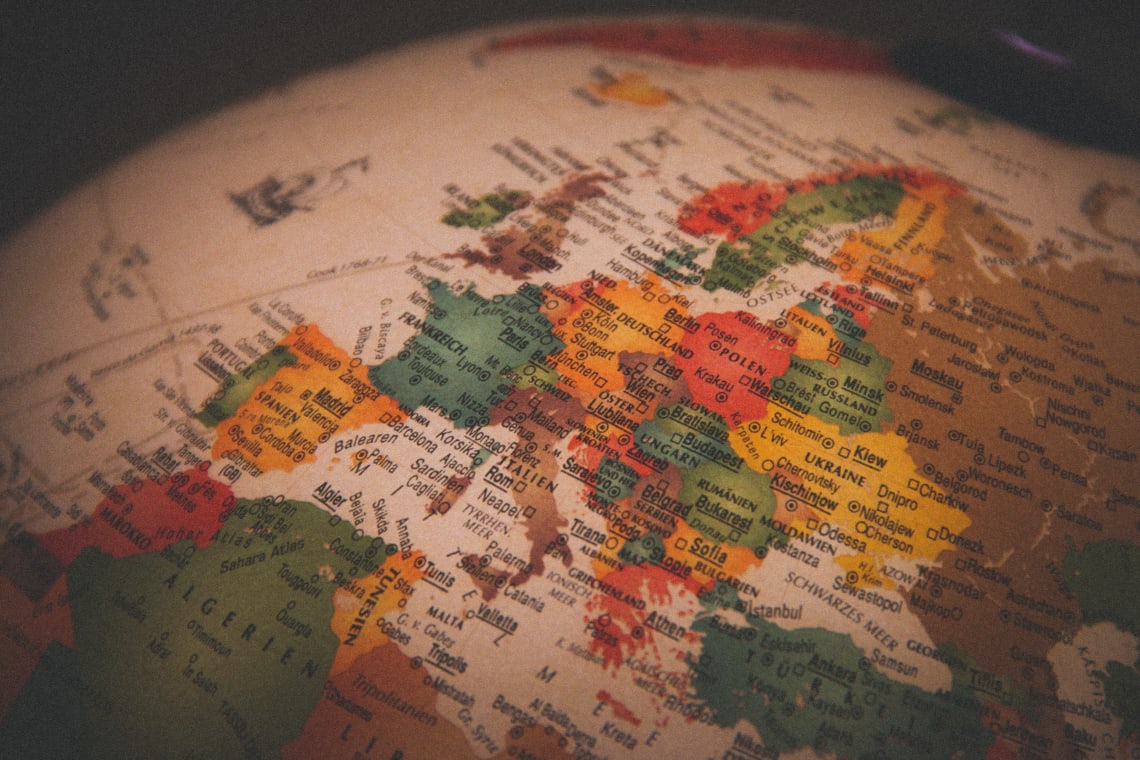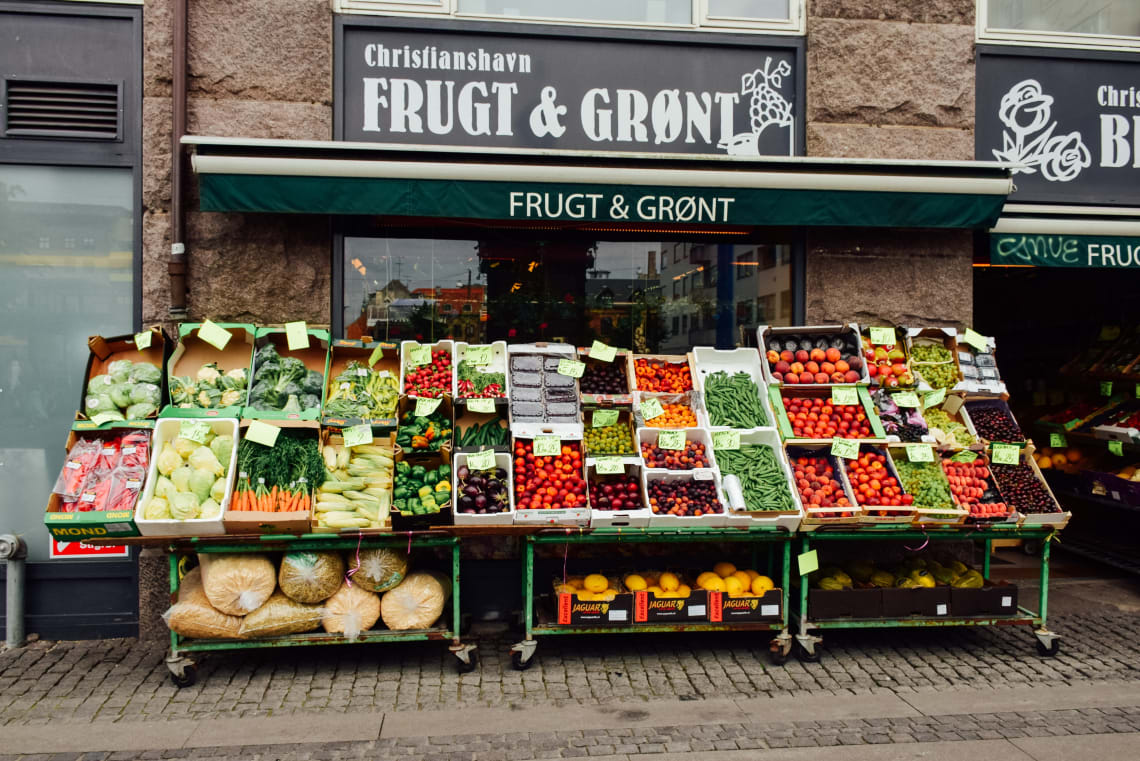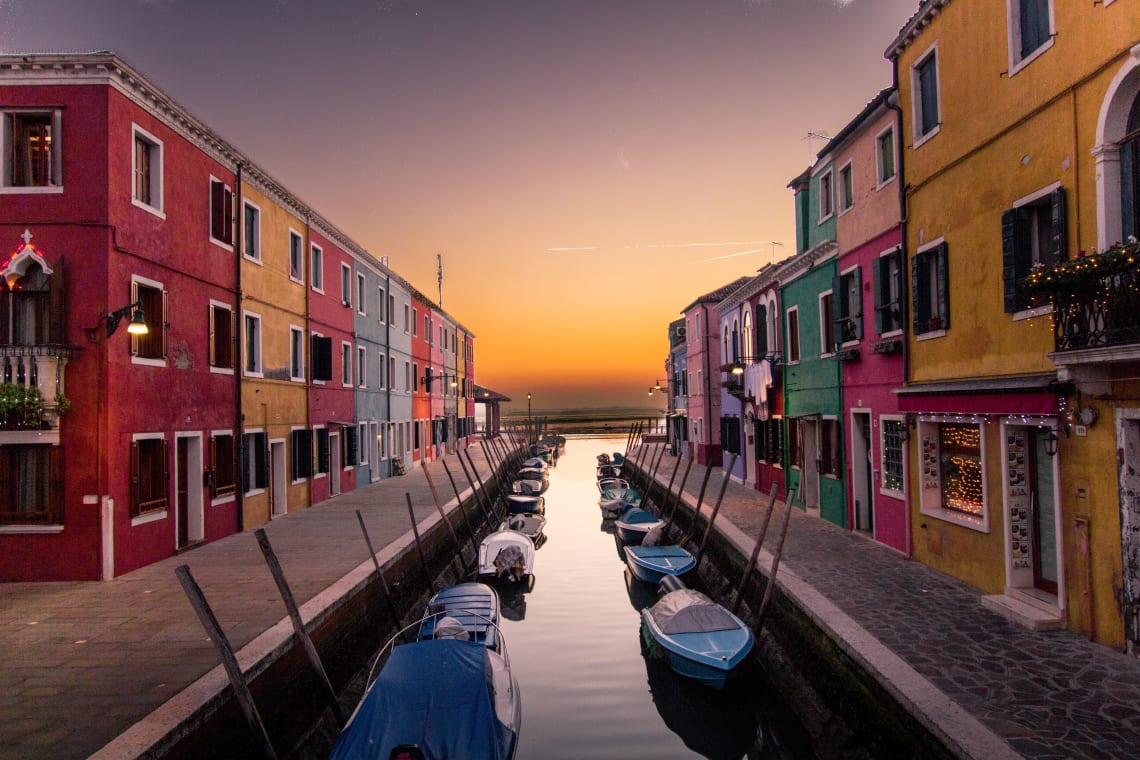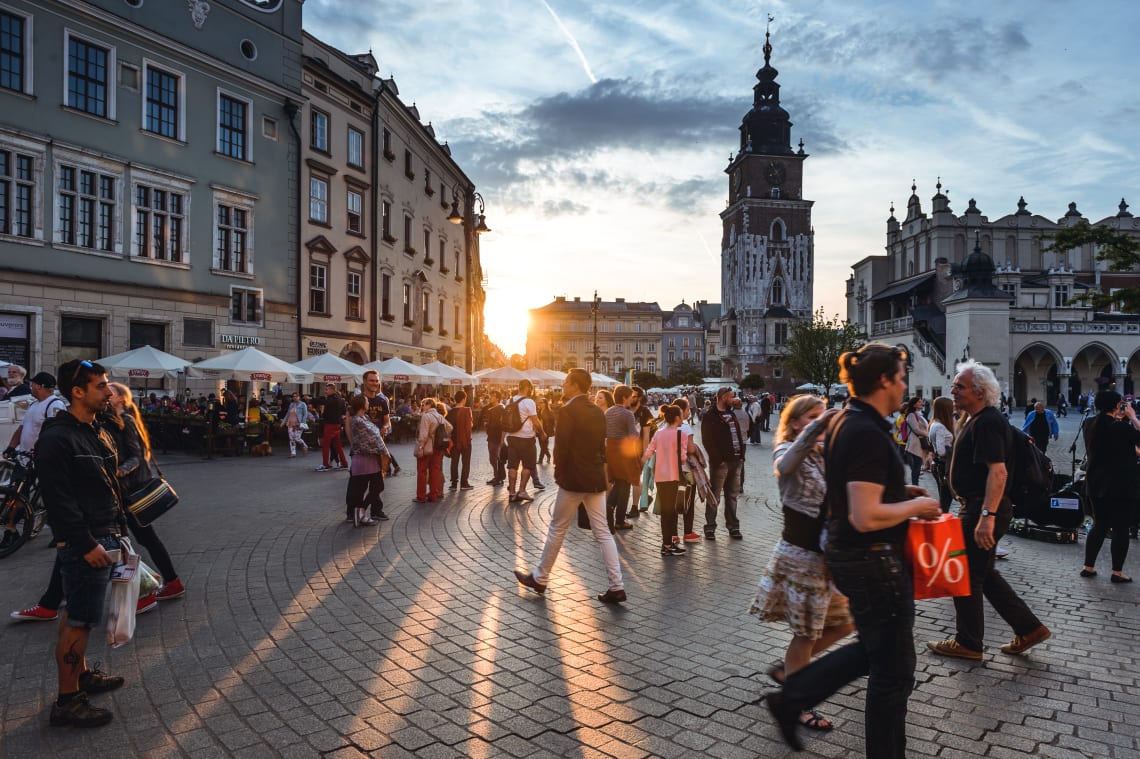
- How about winning a flight ticket worth up to US$500?
- Become a member by January 31st and get a chance to win!
A summary of what a trip to Europe may cost, based on different travel styles, time frames, and destinations.
10min

Europe is one of the most fascinating continents in the world. With 44 countries packed into a relatively small area, you can hop from country to country quickly and cheaply.
And between each country, the landscapes, cultures, and histories vary so much. You can jump on a bus or train for a few hours and end up in a completely different world from where you started.
Currency, language, architecture, traditions, cuisine, and lifestyles are so different in various European countries. It’s such an amazing place to travel because you can experience and learn so much in a shorter time than you could on other continents.
So for anyone who is planning a trip to Europe, you may be wondering how much money you need. As a whole, Europe is one of the more expensive continents to travel around. South America or Asia would be much cheaper.
But it is possible to explore Europe on a budget. And it is important to note that every traveler is different, so the average cost of a trip to Europe could vary greatly from person to person.
But we’ll provide a general Europe trip budget that can be used as a guideline. We’ll also explain some of the main factors that may affect your Europe trip cost, such as where you go, how long your go for, and your travel style. So let’s dive into the average cost of a trip to Europe.

The cost of a European vacation will be different for every person because every traveler is different. But there are some factors that will greatly influence your Europe trip cost. Here are some important things to consider when planning a trip to Europe and estimating how much money you will need.
As I mentioned earlier, countries in Europe are completely different from each other despite being so close together geographically. When thinking about the average cost of a trip to Europe, it is important to think about which countries you will be visiting.
Generally speaking, countries in Eastern Europe are much more affordable than countries in Western and Northern Europe. Most tourists tend to head to Western Europe, whereas the eastern side of the continent isn’t as touristy. That means you get much better value for money in the east.
Some of the cheapest countries to visit in Eastern Europe include Albania, Romania, Bulgaria, Serbia, Montenegro, Hungary, and more. Countries like Greece and Croatia are a bit more touristy and expensive, but they are still generally cheaper than Western Europe. If you spend more time in these countries, your money will go much further.
The most expensive countries in Europe to visit include France, England, Sweden, Norway, Denmark, Switzerland, and Germany. All of these are in Western or Northern Europe, with Scandinavia being one of the most expensive regions in the world. If you spend lots of time here, you’ll need more money for your trip. Countries that are mid-range include Italy, Portugal, Czech Republic, Poland, Slovakia, Austria, Spain, Latvia, and more.
Another factor that will affect the average cost of a trip to Europe is your travel style. Are you a frugal budget traveler? Or do you enjoy luxury? The way you choose to spend your money will greatly affect your Europe travel budget.
For example, a luxury travel style may look like this: staying in 5-star hotels, eating in nice restaurants, getting cocktails in bars, booking expensive excursions and guided tours, shopping for clothes or souvenirs, taking private taxis everywhere, etc. This type of travel style means you will need a lot more money than the average person.
A budget traveler in Europe may have a travel style that is more like this: staying in backpacker hostels, couchsurfing, doing work exchanges, cooking their own meals, eating street food, taking public transport, hitchhiking, prioritizing free attractions, avoiding tourist traps and souvenir shops, flying budget airlines, drinking cheap beer and wine at happy hours, shopping at local markets, etc. With this type of travel style, you won’t spend as much money so you can do more with a smaller budget.
A mid-range traveler will be somewhere in between. It’s a good idea to have balance while traveling. You can travel longer with less money if you use some budget travel tips, but it’s fun to treat yourself as well.
Work exchanges are a great way to travel in Europe because you can save money on accommodation, get to know the locals, and use your saved money for other things like tours and attractions. Some examples of popular work exchanges in Europe include:
These are just a few examples of top-rated work exchanges in Europe where you can lower your trip costs.

For the purpose of this article, I’ll be breaking down the average cost of traveling to Europe on a budget. This is the bare minimum you’ll be spending on your trip if you travel on a backpacker budget. So take into account your travel style and tack on more money accordingly.
Budget travelers in Europe have a few different options for accommodation. Hostels, work exchanges, and couchsurfing are the most popular. All of these options are significantly cheaper than staying in a hotel.
One night in a hostel dorm room in Europe will cost around 20 Euros, on average. This will vary depending on where in Europe you are staying. For example, expensive cities like London, Paris, Reykjavik, Amsterdam, Berlin, Stockholm, or Interlaken will have prices closer to 30 Euros per night. Cheap cities like Warsaw, Budapest, Sofia, Bucharest, and Tirana will have prices closer to 10 Euros per night.
And if you want to find free accommodation in Europe, work exchanges or couchsurfing is the way to go. Accommodation is usually the biggest expense while traveling, so finding free places to stay will significantly lower the average cost of a trip to Europe.
For a work exchange, you’ll work around 20 hours per week to get free accommodation and sometimes free meals. Couchsurfing is another option - It's an online platform where you can find locals that open up their homes to travelers for free.
How much money you spend on food in Europe is hugely dependent on the individual. Eating out can get very expensive, so budget travelers tend to mix in some nice meals with some cheap street food or cooking at your hostel or work exchange kitchen.
The cost of a meal in a restaurant also varies greatly around Europe. An average estimate is also about 20 Euros per meal. Lunch and breakfast are usually cheaper than dinner, especially if drinks are involved. In Western Europe, you’ll easily spend 20 Euros on just breakfast or lunch with a coffee or drink. Dinner could be 30 or 40 Euros with wines and cocktails. In Eastern Europe, you can eat a massive meal in a restaurant for 15 Euros or sometimes less.
Street food and cheap takeaway places around Europe sometimes sell sandwiches or meals for around 10 Euros. So if you’re a budget traveler, let’s say you’d spend an average of 30 Euros per day on food. Again this will vary, especially if you’re doing a work exchange and you get some or all of your meals provided. But if you’re buying some groceries, snacking on street food, and eating out for one meal a day, you’d spend roughly 30 Euros on average.

If you’re a budget traveler, stick to public transport to save money. The amount you’ll spend on transport depends on where you are and how far you want to venture. Many cities in Europe are walkable, so if you get some comfy shoes you can walk to many attractions. But if you’re traveling in more rural areas, public transport, taxis, or renting a car may be necessary.
For the sake of this article, let’s just say you’re staying in a city. To get from place to place, you take public transport, whether it be the train, bus, metro, or anything else. You try to walk as often as possible. Public transport is usually affordable around Europe, even in expensive cities like London. A single journey is only a couple of Euros.
So in one day in a European city, you’ll probably spend around 10 Euros on public transport. Some days you may spend more, such as when you travel to and from the airport or take day trips, which usually cost more than an inner-city journey. But some days you may not use any, so we’ll say 10 Euros is average.
Europe is full of touristy, paid attractions, and free attractions. Many churches, beaches, lookouts, museums, markets, statues, parks, gardens, and galleries are free around Europe -but many have a steep entry fee.
The average cost for museums and galleries around Europe is 10-20 Euros. Day tours are around 100 Euros, but lots of stuff is free as well. We’ll put an average spend of attractions at 20 Euros, to account for the cheaper and the more expensive options.
Keep in mind, this is just an estimate. Extreme budget travelers can very easily avoid paid attractions and just enjoy the sights around Europe for free. So you could definitely spend less than 20 Euros per day. But you also don’t want to miss out on things.
This will vary from person to person, and of course, costs will be lower if you’re sticking to Europe’s cheaper countries. But it’s just a quick estimate.

Now let’s look at a two-week trip to Europe. Based on the information I just gave, you have an idea of what the daily expenses look like for a budget traveler in Europe. I’ll now summarize what the average cost of a 2 weeks trip to Europe might look like for each type of budget range (backpacker, mid-level, and splurge).
Backpackers traveling through Europe will be sleeping in hostels or doing work exchanges, cooking some meals at home, eating at cheap local restaurants or street markets, drinking local alcohol, and choosing free attractions.
Based on the prices I estimated in the above section, here is what 2 weeks in Europe may look like for a budget traveler:
So for 2 weeks in Europe, a budget traveler may spend around 1,120 Euros. This could be lower if you budget to the extreme. Keep in mind, a work exchange cuts your accommodation costs down to 0, and your food, transport, and activity costs may be lower as well depending on what your host offers.

Two weeks in Europe on a mid-level budget will give you a combination of budget travel tips as well as plenty of opportunities to treat yourself. You may stay at a few hostels and a few nicer hotels, or maybe you’ll spend all of your time in affordable budget hotels.
You may also eat out somewhere nice once per day, and mix in some nights out with some affordable meals. Transportation will still be relatively low, unless you opt for taking taxis instead of buses or metros. And attractions will be about the same, with maybe a few expensive day trips or tours to take your trip to the next level.
Here is an estimate of what 2 weeks in Europe might look like for a traveler with a mid-range budget:
So your total might be around 1,960 Euros for two weeks.
If you have a budget with no limits, you can really live like a king or queen in Europe. There are so many fancy hotels, restaurants, and services that you can indulge in. The real luxury options will have outrageous price tags that suit the rich and famous, but even if you’re an average person who wants to splurge, you can keep the budget reasonable without missing out on anything.
Splurging in Europe, within reason, means staying at nice hotels, taking taxis, dining out, getting cocktails, and booking every attraction you want to regardless of the fees. Here is an overview of what two weeks in Europe on a high budget may look like:
That adds up to 5,320 for two weeks of luxury in Europe. This could easily be more, but it’s just a starting point.

The main factor you should take away from this article is that you are in charge of your own trip. These estimates are designed to help you formulate your own budget that suits your destinations and your travel style.
Also be sure to budget for flight costs, travel insurance, and any other purchases you think you might make abroad. And if you’re looking for the best way to cut costs while traveling in Europe, work exchanges are the way to go.
Check out our full list of work exchanges in Europe if you want to save money during your trip!
Write here your questions and greetings to the author
Arslanbek
May 10, 2023
my name is Arslanbek I need a job I can assemble furniture can you help me
Oybek
May 14, 2023
How to pour from me
Rakesh
Jul 10, 2023
How to come...........?